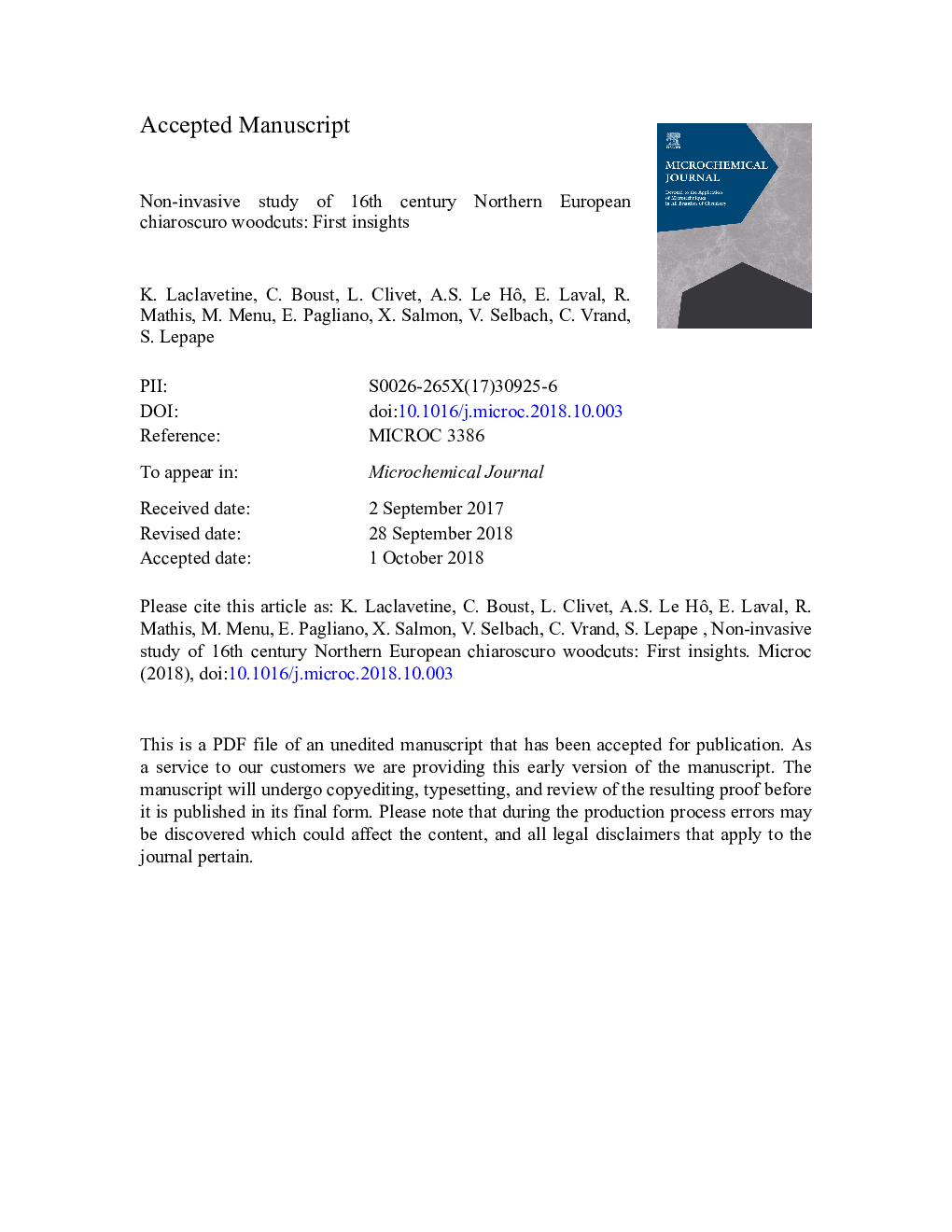| Article ID | Journal | Published Year | Pages | File Type |
|---|---|---|---|---|
| 11031261 | Microchemical Journal | 2019 | 23 Pages |
Abstract
This scientific study of color prints from chiaroscuro woodcuts is of particular interest and has not yet been carried out on Northern European prints. The aim of this work is to analyze the ink and paper chemical composition, and to define the sequence of printed layers in order to understand how the artists and their workshop achieved visual effects. The methodology, entirely non-invasive and non-destructive, involves the complementary use of imaging and spectroscopic techniques. Imaging techniques provide microscopic and macroscopic observations of the color prints. Together with infrared false color (IRFC) photography, they allow to make the first assumptions regarding the pigments and dyes used in the inks and their sequence of application. X-ray fluorescence (XRF) spectroscopy and fiber optics reflectance spectroscopy (FORS) in visible range enable to detect presence of paper treatments and to characterize pigments and, in some cases, dyes. The paper demonstrates the great potentiality and ability of the totally non-invasive imaging and spectroscopic techniques and shows, for the first time, the results obtained on Northern European chiaroscuro woodcuts produced during the 16th century.
Related Topics
Physical Sciences and Engineering
Chemistry
Analytical Chemistry
Authors
K. Laclavetine, C. Boust, L. Clivet, A.S. Le Hô, E. Laval, R. Mathis, M. Menu, E. Pagliano, X. Salmon, V. Selbach, C. Vrand, S. Lepape,
